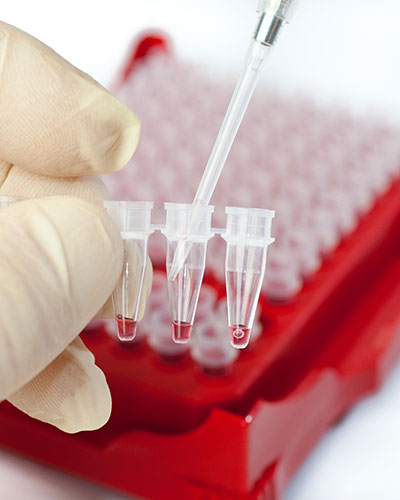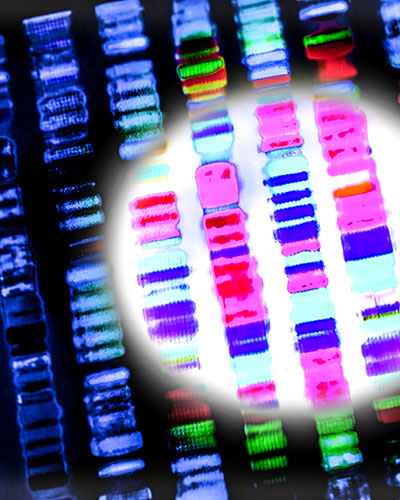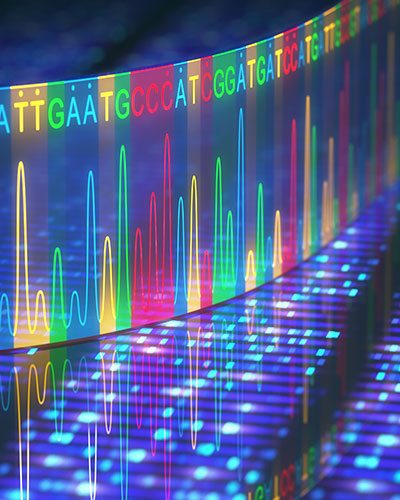PCR ASSAY TESTING AND DESIGN
Detection and identification of bacteria and viruses play important roles in a multitude of areas, such as healthcare, biodefense, biomedical research, and food safety. Exponential growth in the availability of genomic sequence data has made it possible to identify regions, species, strains, and even serotypes of bacteria, as well as various classes and strains of viruses.
Many PCR assays currently in use for detecting and identifying select agents and foodborne pathogens were designed years ago, when sequence data was not widespread and whole genome sequencing was rare. Many of these older assays are limited by the availability of genomic data at the time of their inception. Additionally, organisms naturally move away from detection range due to outbreaks and genetic drift. Could there be a way to use new sequencing data to ensure that your current assays are still performing as expected?
Noblis developed tools have the capability to validate that your assays are being compared to the latest data and revised or replaced as needed to reduce false positives. Learn how our full-service suite of tools help identify failures, find new detection regions, and develop new assays for select agent and foodborne pathogen detection.
Using PCR Signature Erosion Tool (PSET) to Identify Assay Failure
As the NCBI and other public databases are updated over time, false positives from assays are increasingly evident. Newly added strain genomes can highlight where primers and probes may no longer be functional or where PCR assays may detect previously unsequenced near neighbors. Noblis’ PSET tool, currently in use by Army’s Defense Biological Products Assurance Office, can:
- Test PCR assay collections in silico against the latest versions of NCBI's sequence databases
- Determine if assays still match only to their intended targets
- Test performance of assays during outbreak scenarios to evaluate if an organism has not mutated out of detection range, as Noblis did with the Ebola Virus in 2014.
Moving forward, our current research and development will lead to new features for PSET. In the future, this tool will:
- Test assays that use ambiguous base codes
- Create an exhaustive array of potential primer combinations using all sequence variations
- Create custom visualizations to display the results of an assay run against a series of public databases
- Help a user quickly assess how effective an assay is, as well as display the type and location of mismatches that could cause assay degradation

Using BioVelocity for Target Detection
Most existing species-specific assays were designed based on limited sequence information and were gene-specific due to historical or laboratory-specific influences. Designing primers in this way is time and labor intensive, which is why Noblis has developed a pipeline for detecting conserved and signature sequences. Using the Noblis BioVelocity tool, our pipeline has been able to:
- Find all regions conserved to target organisms, and further filter possible regions by comparing them to all other organisms
- Identify conserved and signature regions that are highly discriminative to targets
- Create useful visualizations of these results

USING OPEN SOURCE TOOLS TO OPTIMIZE PRIMERS
A key tool in molecular biology is the use of primers for PCR amplification and for DNA sequencing. Noblis uses a variety of tools to design primers to accomplish these tasks. We are currently working to integrate the widely-used primer design tool Primer3 into our conserved and signature sequence detection pipeline. This is planned to:
- Design multiple primers simultaneously while applying a customized scoring formula to evaluate the quality of the generated primers
- Produce a list of all possible primers detected from a given set of sequences ranked per user adjustable parameters
- Evaluate important parameters to the actual performance of primers on an ongoing basis, and use those results to refine the primer design process

New Primer Design
New primer design efforts are very time consuming, and very labor intensive, and they need significant investment in subject matter expert input and data management. Noblis has developed a fully automated pipeline to discover and update PCR assays and to establish a new gold standard for assay development. Leveraging a full suite of tools, we can:
- Discover, devise, validate, and update primers in silico
- Define optimal target regions using Noblis’ conserved and signature sequence detection, and determine which regions are best suited for assay design using Primer3.
- Maintain a repository of currently used primer sequences, and continually monitor assay effectiveness using the Noblis PSET tool
